Paro travel - Bhutan, Asia
Paro is a charming town located in the scenic Paro Valley of Bhutan, sitting at an elevation of about 2,250 meters (7,382 feet). It lies around 54 kilometers (33 miles) from Bhutan’s capital, Thimphu, and is close to the Tibetan border. Paro is known for its rich cultural heritage and breathtaking landscapes.
One of Paro's most famous attractions is the Tiger's Nest Monastery (Taktshang), a sacred Buddhist site perched dramatically on a cliffside, drawing pilgrims and tourists alike. The town is also home to Bhutan’s only international airport, which is renowned for its challenging landings due to the surrounding mountains. Visitors can explore historical landmarks such as Rinpung Dzong, a fortress-monastery, and the Drukgyel Dzong, which stands in ruins but tells a story of Bhutan's victory over Tibetan invaders.
Beyond its historical significance, Paro offers stunning natural beauty, with terraced fields, lush forests, and scenic trekking routes that provide breathtaking views of the Himalayas. The town also comes alive during cultural festivals like the Paro Tshechu, where traditional dances and rituals attract both locals and travelers.
Population Estimate 1.6 million (as of 2024)
Economy: Tourism plays a significant role in Paro's economy, with visitors flocking to see iconic attractions like the Tiger's Nest Monastery (Taktshang). The trek to this sacred site is a highlight for many tourists. Cultural festivals such as the Paro Tshechu further boost local businesses by showcasing traditional Bhutanese dances and rituals, drawing both locals and international travelers.
Visitors can explore the vibrant Paro Weekend Market, where they’ll find traditional handicrafts like weaving, wood carvings, and textiles, supporting local artisans. In addition to tourism, agriculture thrives in the fertile Paro Valley, where crops like rice and vegetables are grown, and traditional cheese and butter are produced.
Architectural Highlights: Tiger's Nest Monastery (Taktshang), Paro Rinpung Dzong, Kyichu Lhakhang, Drukgyel Dzong Ruins, National Museum of Bhutan, Chele La Pass, Jangsarbu Lhakhang
Bhutan
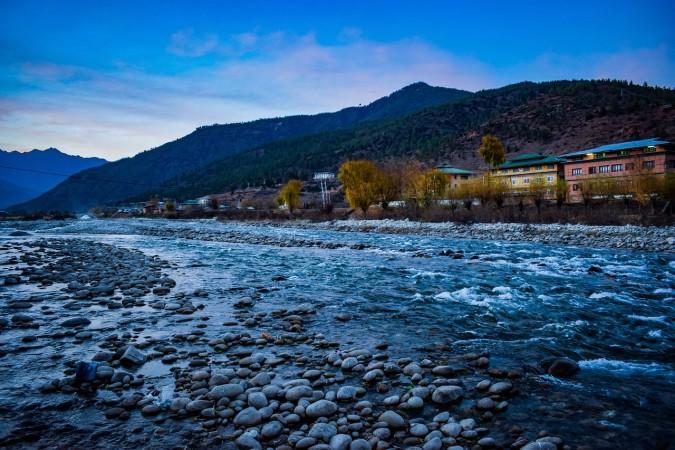
Overview of Paro
History & Cultural Influence
Paro's history is marked by its position as a key entry point into Bhutan, which made it a crucial military and trade outpost. The valley served as a conduit for both goods and ideas, facilitating the spread of Buddhism from Tibet into Bhutan. This cultural exchange significantly influenced the religious and cultural landscape of Paro and Bhutan at large.
The construction of iconic fortresses such as Rinpung Dzong and Drukgyel Dzong in the 16th and 17th centuries underlines Paro’s role in Bhutan’s defense strategy against Tibetan invasions. Drukgyel Dzong, in particular, was built to commemorate Bhutanese victory over Tibetan forces and has been a symbol of Bhutanese strength and resilience.
The city is dotted with numerous ancient temples and monasteries, including the famous Tiger’s Nest Monastery (Taktshang) which is a significant pilgrimage site. Built in the 8th century, this monastery is one of the holiest sites in Bhutan and exemplifies the profound spiritual heritage that defines Paro.
The city’s architecture, characterized by ornate wooden carvings and traditional Bhutanese designs, reflects Paro’s commitment to cultural preservation amidst modernization. This architectural style not only serves aesthetic purposes but also represents the Bhutanese people's deep respect for their environment and traditions.
Interaction with The Locals
Characterized by a deep-seated courtesy that is rooted in Bhutanese culture The people of Paro, like much of Bhutan, are known for their hospitality and gracious demeanor towards visitors. Tourism is a significant part of Paro’s economy, and as such, locals are generally welcoming and helpful to tourists. There is a strong national emphasis on preserving and sharing Bhutanese culture and traditions, which is evident in the interactions between locals and visitors.
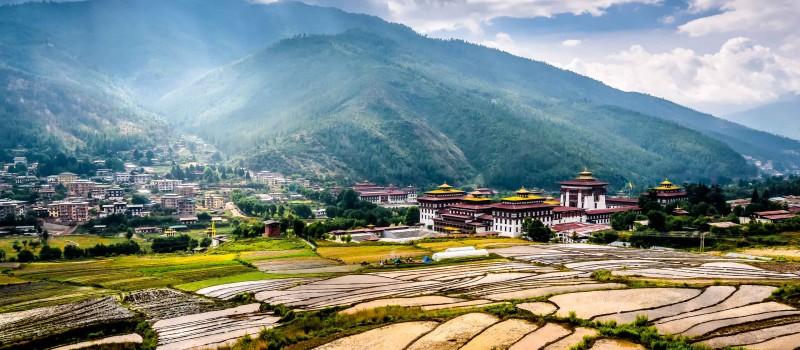
Thimphu, Bhutan - © gather
Top Attractions in Paro
Tiger’s Nest Monastery (Taktshang Goemba)
Perched on the edge of a 1,200-meter cliff, this stunning monastery is Paro’s most famous attraction. Founded in the 8th century as a meditation cave, it has become a symbol of Bhutan. The site offers breathtaking views and a glimpse into the spiritual heritage of the country.
Paro Rinpung Dzong
Known as the "Fortress on a Heap of Jewels," this large dzong is an excellent example of Bhutanese architecture and a vital religious and administrative center. Located on a hill above the Paro River, the dzong houses the district Monastic Body and government administrative offices.
National Museum of Bhutan
Housed in a former watchtower above the Rinpung Dzong, this museum is dedicated to Bhutanese cultural heritage, showcasing a variety of Bhutanese artifacts, including traditional costumes, weapons, thangkas, and masks. The circular structure provides panoramic views of Paro valley.
Drukgyel Dzong Ruins
Located in the upper Paro valley, these ruins are a historical testament to the Bhutanese military victories over Tibetan invaders. Although mostly in ruins, the site offers a historical insight into the 17th-century Bhutanese architecture and warfare.
Chele La Pass
As one of the highest motorable passes in Bhutan, Chele La offers spectacular views of the surrounding mountains and valleys. Located about an hour's drive from Paro, it’s a popular spot for trekking and biking, with many visitors coming to see the rhododendrons bloom in spring.
Kyichu Lhakhang
One of the oldest and most beautiful temples in Bhutan, dating back to the 7th century. It is considered one of the two oldest temples built in Bhutan by Tibetan King Songtsen Gampo to subdue a demoness. This site provides a peaceful and spiritual experience amidst ancient relics and lush gardens.
Paro Chhu (River)
Flowing through the Paro Valley, this river enhances the natural beauty of the area and offers opportunities for peaceful riverside walks or picnics. The clean and clear waters set against the backdrop of lush fields and traditional homes create a picturesque setting.
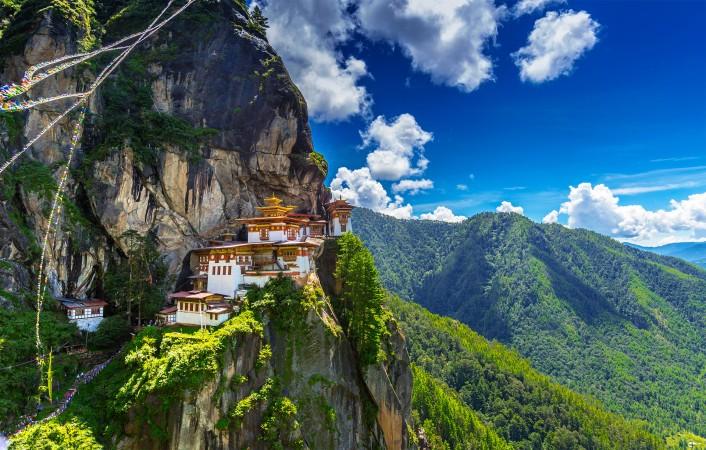
Taktshang Goemba - © Khanthachai
Must-Try Dishes in Paro
When visiting Paro, Bhutan, there are several local dishes and specialties that you should not miss, each offering a unique taste of the region's culinary culture:
Ema Datshi
If there's one dish that defines Bhutanese cuisine, it's Ema Datshi. Often hailed as the national dish of Bhutan, this spicy concoction is a staple in Paro and a daily favorite for many locals. The dish combines an abundance of green and red chilies with generous portions of fresh yak or cow's milk cheese. Every family adds its own touch, so no two bowls are exactly alike. Be prepared for a fiery experience—Bhutanese people love their chilies, and Ema Datshi doesn't hold back! It's a simple yet bold dish that truly represents the heart and soul of Bhutanese cooking.
Jasha Maroo
Looking for something hearty and warming? Jasha Maroo is a spicy chicken stew that's sure to satisfy. Made with diced or shredded chicken, it's simmered together with tomatoes, green chilies, onions, garlic, ginger, and a blend of local spices. Some variations even include a splash of Bhutanese rice wine for extra depth. Served often with red rice, this dish reflects the Bhutanese love for rich flavors and spices. It's comfort food at its finest, perfect after a day of exploring monasteries and mountain trails.
Momos
A visit to Paro wouldn't be complete without indulging in some delicious momos. These steamed dumplings, borrowed from Tibetan cuisine, have become a beloved snack and meal option throughout Bhutan. Stuffed with minced meat like pork or beef, or vegetarian fillings such as cabbage, cheese, and spinach, momos are usually served with a spicy tomato and chili sauce that adds an extra kick. You'll find them at street stalls, markets, and restaurants—especially during festivals and gatherings. They're not just food; they're a social experience, showcasing the communal spirit of the Himalayan region.
Red Rice
At the heart of many Bhutanese meals is red rice, a variety unique to the fertile soils of the Paro Valley. This whole grain rice has a slightly nutty flavor and a reddish-brown hue due to being unpolished. It's lighter and fluffier than brown rice but retains a pleasant chewiness. Rich in fiber and minerals, red rice is not only tasty but also nutritious. It pairs perfectly with dishes like Ema Datshi and Jasha Maroo, absorbing sauces and balancing out the spiciness of Bhutanese cuisine.
Suja (Butter Tea)
To truly immerse yourself in local traditions, you have to try Suja, the traditional Bhutanese butter tea. This warm beverage is made by brewing strong tea leaves and then churning them with yak butter (or cow's milk butter) and salt. The result is a creamy, savory drink that's especially comforting in Paro's cooler mountain climate. Suja is more than just tea; it's an integral part of Bhutanese hospitality and is often served during social occasions and festivals. Sipping Suja offers a glimpse into daily life and reflects the Tibetan influences woven into Bhutan's cultural fabric.
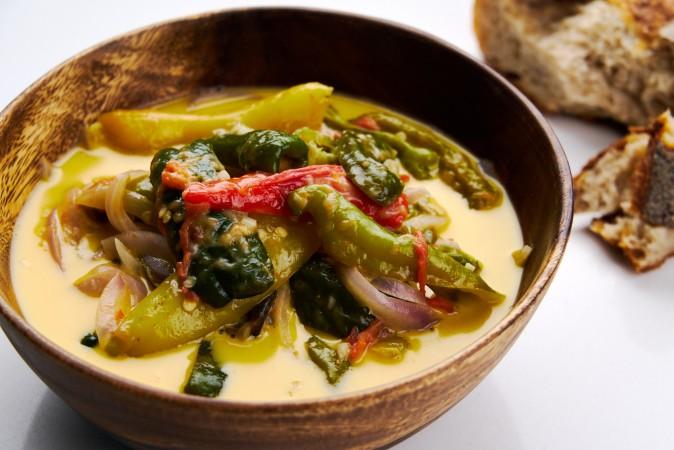
Ema Datshi - © gather
Weather in Paro: Best Time to Visit
Paro, Bhutan, experiences a range of weather conditions throughout the year due to its subtropical highland climate. Here's a breakdown to help travelers plan their visit:
Temperature
- Winter (December-February): The coldest months, with January temperatures ranging between 1°F and 35°F. Light snowfall is common.
- Spring (March-May): A pleasant season with temperatures gradually rising from 40°F in March to around 48°F in May. Rainfall increases as the season progresses.
- Summer (June-August): Warm with the highest temperatures around 55°F in July and August. This period also marks the monsoon season, receiving the most rainfall, especially in July with about 4.54 inches.
- Autumn (September-November): Generally cool and comfortable. September sees temperatures around 52°F, decreasing to about 40°F in November.
Rainfall
The rainy season spans from May to September, with peak rainfall in July. The drier months are from October to April, with December being particularly dry.
Best Time to Visit
The optimal time for visiting Paro is during spring (March to May) and autumn (September to November). These months offer moderate temperatures and lower rainfall, making them ideal for outdoor activities and exploring the natural and cultural sights.
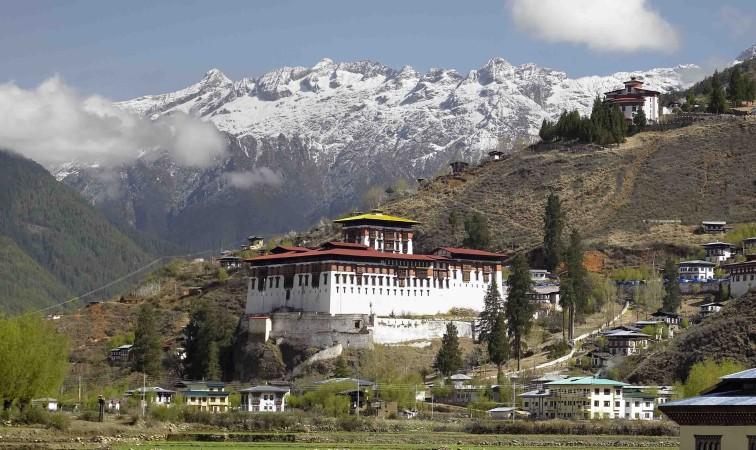
Rinpung Dzong Bhutan - © gather
Festivals & Local Celebrations
Paro, is renowned for its vibrant festivals that are deeply embedded in the cultural and spiritual fabric of the region. Here are some major festivals celebrated in Paro, each offering unique experiences for visitors:
Paro Tshechu
Time of Year: Typically held in spring, around March or April.
Paro Tshechu is one of the most popular and colorful festivals in Bhutan. It lasts for several days and includes dances performed by trained monks and laymen in amazing masks and costumes. These dances are known as Cham dances and they tell stories of mythical beings and heroes. The highlight is the unfurling of the Thongdrel, a large tapestry featuring a seated Guru Rinpoche surrounded by holy beings, believed to cleanse the viewer of sin. The festival concludes with a vibrant display of fireworks.
Jomolhari Mountain Festival
Time of Year: Occurs in October.
This festival is unique as it celebrates the culture of the communities living around the Jomolhari mountain area. The festival features exhibitions of traditional Bhutanese culture, including folk dances, songs, and demonstrations of local traditions. One of the aims of the festival is to raise awareness about the conservation of the snow leopard. It's an excellent opportunity for visitors to experience and learn about the rich natural and cultural heritage of the Paro district.
Paro Red Rice Festival
Time of Year: Usually held in September.
The Red Rice Festival is a relatively new addition to Bhutan's festival scene, celebrating the red rice crop cultivated in the Paro valley. The festival features traditional music, dance performances, and, most importantly, the diverse ways red rice can be used in Bhutanese cuisine. Visitors can taste various dishes made from red rice and participate in interactive activities like rice planting or harvesting, depending on the time of their visit.
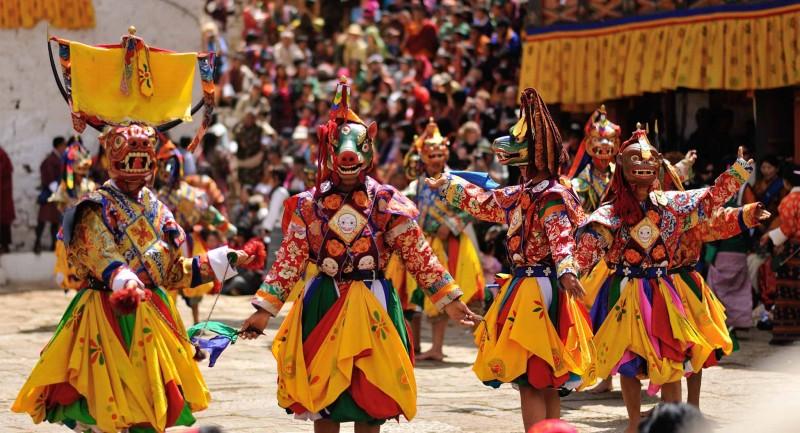
Paro Tshechu - © gather
Culture Etiquette in Paro
When visiting Paro, Bhutan, it is essential to be aware of the local customs and cultural etiquette to ensure a respectful and enjoyable experience. Here are some important points to consider:
General Etiquette
- Dress Modestly: Bhutan is a conservative society, and visitors should dress appropriately, especially when visiting temples and dzongs. Avoid wearing shorts, tank tops, and revealing clothing. Instead, opt for long sleeves and skirts or trousers that cover the knees.
- Respect Religious Practices: Bhutan is a deeply religious country, and it is crucial to show respect for its customs. When entering temples or dzongs, remove your shoes and hats. Photography is often prohibited inside religious sites, so always ask for permission before taking pictures.
- Greeting Customs: A common greeting in Bhutan is "Kuzuzangpo la," accompanied by a slight bow with palms together. This gesture shows respect and friendliness.
- Body Language: Avoid pointing with your finger, especially at people or religious artifacts. Instead, use an open palm to indicate something. Also, do not touch anyone’s head, as it is considered sacred.
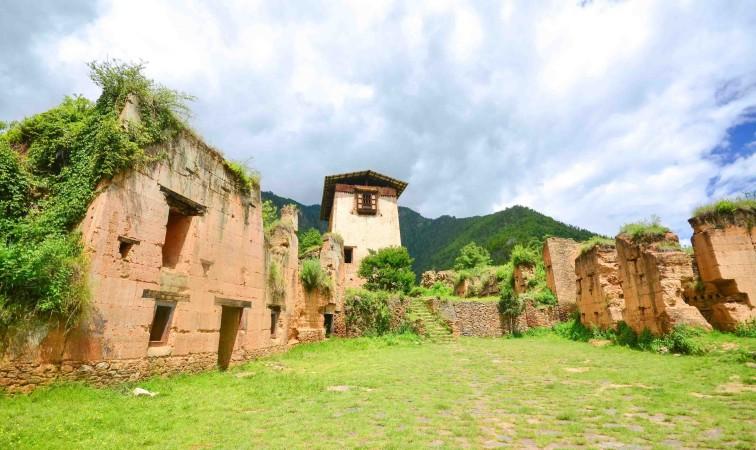
Drukgyel Dzong Bhutan ruins - © gather
Essential Travel Information
Getting to Paro
Airport Transfers
- Paro International Airport (PBH) is the only international airport in Bhutan, located about 6 km from Paro town.
- Airport taxis are available 24/7 for safe and convenient transfers to your hotel. Booking can be done online or offline with various payment options.
- Many hotels in Paro offer airport pickup services, which can be arranged in advance for a seamless arrival.
- Private one-way transfers from the airport to your hotel in Paro can also be booked through tour operators and travel agencies.
Public Transportation
- Buses connect Paro to other major cities in Bhutan, but they are infrequent and not very reliable for tourists.
- Taxis are the most convenient way to get around Paro and to nearby attractions. They can be hired for day trips and sightseeing.
Getting Around Paro
Taxis
Taxis are readily available in Paro and are the primary mode of transportation for visitors.
Fares are metered, and prices are reasonable compared to other countries.
Taxis can be hired for airport transfers, day trips, and sightseeing around Paro.
Walking
Paro town is compact and walkable, especially around the main street and market area.
Many hotels are located within walking distance of the town center.
Bicycles
Cycling is a popular way to explore the scenic Paro Valley and nearby attractions.
Some hotels and tour operators offer bicycle rentals for guests.
ATM and Banking Services
Paro International Airport offers facilities like ATMs and currency exchange through providers like Bank of Bhutan and Druk PNB Bank. These services are easily accessible in the airport premises for both arrivals and departures, ensuring travelers can manage their monetary needs upon arrival or before departure. Always ensure to check the latest exchange rates as they can fluctuate.
Accommodation Choices
Paro provides a wide array of accommodations catering to different preferences and budgets. Here are a few popular options:
- Luxury Hotels: For those seeking upscale amenities, Uma Paro and Zhiwa Ling Heritage offer premium services, traditional Bhutanese architecture, and stunning views of the Paro Valley.
- Mid-range Options: Hotels like Tshongdu Boutique and Hotel Khamsum provide comfortable stays with good facilities, often including restaurants and cultural experiences.
- Budget Accommodations: For more economical stays, places like the Rema Resort and Nirvana Inn offer basic services at lower prices.
Articles for you

Explore Yala National Park - Sri Lanka Travel, Asia
Tucked away in Sri Lanka’s southeastern corner, Yala National Park is where wild nature meets deep tradition. Known worldwide for its leopard population, the park is also home to elephants, sloth bears, crocodiles, and hundreds of bird species. Beyond wildlife, Yala opens doors to a cultural landscape dotted with ancient temples, Buddhist ruins, and coastal villages. For travelers seeking more than just a safari, Yala offers a chance to explore eco-tourism, local communities, and sacred heritage sites.
Population: The Yala National Park area doesn’t have a human population.
Economy: The economy around Yala National Park thrives on a blend of eco-tourism, agriculture, and local services. Safari tours, eco-lodges, and cultural experiences drive steady income for nearby towns like Tissamaharama and Kataragama, supporting thousands of families.
Landmarks: Famous for Block I of Yala and wildlife encounters, including elephants, sloth bears, crocodiles, and exotic bird species.

Explore Galle - Sri Lanka Travel, Asia
Nestled on Sri Lanka’s southern coastline, Galle is a vibrant city where history meets the sea. Its cobbled streets, colonial architecture, and serene beaches make it a must-visit destination for travelers seeking a blend of culture, adventure, and relaxation. A UNESCO World Heritage site, Galle captivates visitors with its Dutch Fort, bustling markets, and friendly locals. Whether you’re exploring the ramparts at sunset or savoring fresh seafood by the shore, Galle promises an unforgettable journey into Sri Lanka’s heritage.
Population: Approximately 113,000 in 2023.
Economy: Galle’s economy thrives on tourism, trade, and fisheries. The city’s historic fort, colonial architecture, and coastal charm draw thousands of international visitors each year, making tourism its main economic driver. Fishing remains vital for local livelihoods, supplying fresh seafood across the region.
Landmarks: Famous for the Galle Fort, Dutch Reformed Church & Maritime Museum, and Unawatuna Beach.

Explore Bentota - Sri Lanka Travel, Asia
Nestled along Sri Lanka’s southwestern coast, Bentota is a tropical paradise that blends golden beaches, vibrant culture, and thrilling adventures. Famous for its calm waters, luxury resorts, and scenic river estuary, Bentota has become a top destination for travelers seeking both relaxation and authentic experiences. From serene beach walks at sunrise to adrenaline-pumping water sports, this coastal town offers a perfect balance of leisure and exploration. With its proximity to Colombo and Galle, Bentota is easy to reach, making it an ideal stop for both short escapes and extended holidays.
Population: Approximately 37,000 in 2023.
Economy: Bentota’s economy thrives mainly on tourism, which drives local businesses such as hotels, restaurants, and wellness retreats. The town also benefits from fishing, coconut cultivation, and handicrafts like wood carving and batik textiles. Many residents rely on the growing demand for water sports and Ayurvedic treatments, making tourism the backbone of both income and employment in the area.
Landmarks: Famous for Bentota Beach, Bentota River Safari, and Kande Vihara Temple.

Explore Mirissa - Sri Lanka Travel, Asia
Mirissa is a charming coastal town on Sri Lanka’s southern shoreline. Known for its golden beaches, turquoise waters, and vibrant marine life, it has become a must-visit stop for travelers exploring the island. Many come for whale watching, surfing, and sunset views at Coconut Tree Hill, but Mirissa offers much more than postcard beauty. The fishing boats you see anchored by the bay carry generations of stories. Local traditions, delicious cuisine, and a laid-back rhythm of life shape every visitor’s experience.
Population: Approximately 4,700 in 2023.
Economy: Mirissa’s economy is largely shaped by its coastal location. Fishing has long been the backbone of local livelihoods, with generations relying on the Indian Ocean for income. In recent decades, tourism has become the main driver of growth, thanks to whale watching, surfing, and beachside hospitality.
Landmarks: Famous for Mirissa Beach, Coconut Tree Hill, and Parrot Rock Bridge.

Explore Nuwara Eliya - Sri Lanka Travel, Asia
Tucked away in the Central Highlands of Sri Lanka, Nuwara Eliya is often called “Little England”. With its rolling tea plantations, cool misty mornings, and colonial charm, this mountain town feels like a step into another world. Travelers come here to breathe fresh air, walk through flower gardens, sip the finest Ceylon Tea, and enjoy a pace of life far from the island’s busy cities. Whether you’re drawn by scenic landscapes, heritage architecture, or the warmth of its people, Nuwara Eliya is a destination that blends nature, culture, and history in perfect harmony.
Population: Approximately 781,000 in 2023.
Economy: Nuwara Eliya’s economy thrives mainly on tea production, as it sits in the heart of Sri Lanka’s central highlands, famous worldwide for Ceylon Tea. The city also benefits from a growing tourism industry, attracting visitors with its colonial charm, cool climate, and scenic landscapes.
Landmarks: Famous for Gregory Lake, Hakgala Botanical Garden, and Victoria Park.

Explore Sukau - Malaysia Travel, Asia
Nestled on the banks of the Kinabatangan River in Sabah, Malaysian Borneo, Sukau is a destination where wildlife, culture, and conservation come together. Known as one of Asia’s top spots for river safaris and eco-tourism, this quiet village offers a front-row seat to encounters with Bornean orangutans, pygmy elephants, proboscis monkeys, and exotic birdlife.
Population: Approximately 1,400 in 2019.
Economy: Sukau’s economy is shaped by its riverine location and natural resources. Traditionally, the Orang Sungai community relied on fishing, small-scale farming, and forest gathering for their livelihood. Today, the village has shifted toward eco-tourism, with river cruises, jungle trekking, and homestays providing income.
Landmarks: Famous for the Kinabatangan River cruises, Gomantong Caves, and Ox-bow lakes and wetlands.
